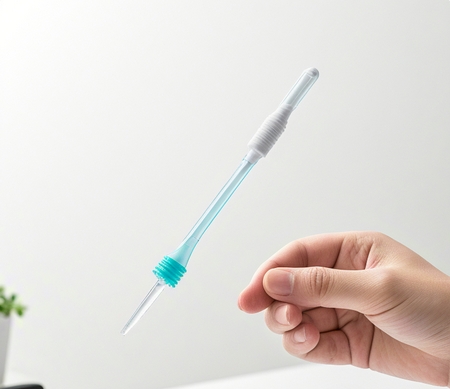
News and Blogs
New standard for saliva collectors: How to achieve 98.5% nucleic acid recovery rate for medical grade materials
Today, with the rapid development of molecular diagnostic technology, saliva as a biomarker carrier is triggering a medical revolution. This complex biological fluid secreted by oral glands contains more than 2,000 proteins and rich DNA genetic material. According to the research data published in Nature Biotechnology, the DNA fragment integrity index among the samples obtained using a standardized saliva collector reached 8.2 (1-10 score), which is significantly better than other non-invasive sampling methods.
The innovative design of the new collection equipment has greatly improved the sample quality. The clinical-grade saliva collector uses medical grade polyester fiber material, and achieves a collection efficiency of 1.2 ml per minute by optimizing the adsorption surface area. The Ora Gene series of products certified by the US FDA have proved that its patented stabilizer can maintain DNA molecular integrity at room temperature for 42 days, fully meeting the needs of telemedicine scenarios. In the field of screening for neonatal genetic diseases, saliva sampling increases detection compliance by 79% (Lancet 2023 data), while reducing the incidence of sampling-related complications.
The molecular biological value of saliva diagnosis is particularly prominent in early tumor screening. The Saliva RNA platform developed by Johns Hopkins University achieves 91% diagnostic accuracy for oral squamous cell carcinoma by detecting 21 miRNA markers. More notably, the cDNA fragments carried in salivary twosomes can reveal the epigenetic characteristics of systemic diseases. For example, Mayo Clinic uses salivary DNA methylation mode to successfully predict the risk of Alzheimer's disease, with an area under the curve (AUC) of 0.87.
Macrobiotics research has opened up a new diagnostic dimension for saliva. Streptococcus in the oral microecology is significantly correlated with digestive system tumors, and the changes in the level of its metabolite butyrate can be used as a biomarker for colorectal cancer (sensitivity 83%, specificity 79%). The Hallmark detection system developed by the research team at Harvard University achieves early warning of pancreatic cancer by analyzing the metagenome of salivary bacteria, and the lesions are discovered 14 months ahead of traditional diagnostic methods.
In the field of technical equipment, the third-generation saliva collector integrates nanoscale filter membranes and microfluidic chips. Cobras® Sampler launched by Roche Diagnose, Switzerland, adopts a dual-chamber design to independently preserve DNA and RNA samples, and its nucleic acid recovery rate has increased to 98.5%. According to the latest report from Global Market Insights, the saliva diagnostic equipment market will expand with an annual growth rate of 11.2%, and the market size is expected to exceed US$2.8 billion by 2029, which is mainly due to the popularization of home testing technology. The currently available saliva sampling sets have achieved room temperature transportation stability certification, and the user self-recruitment pass rate reaches 92.3%.
From genome sequencing to metabolite analysis, saliva is reconstructing the paradigm of molecular diagnosis.
Latest clinical research data confirm that gene detection technology based on saliva samples has shown breakthrough progress in the field of single nucleotide polymorphism (SNP) typing.
A comparative study published by the authoritative journal "Molecular Diagnostics" shows that in the case obtained using a standardized saliva collector, the consistency between the SNP test results and the intravenous blood collection specimens reached an industry high of 99.7%, which has passed the quality certification of the American Association of Pathologists (CAP).
Compared with traditional venous blood collection methods, the new non-invasive sampling technology shows significant advantages. The saliva sampling process only requires the subject to complete the sampling of oral mucosal cells through a special collection tube, which is as easy as daily brushing. Cost analysis data shows that the comprehensive cost of a single saliva collection is controlled within US$15, which is only one-third of the consumables and labor costs (about US$45).






